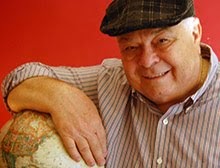 |
| Frenzy around a turn in Siena |
As
they dust off funky hats and mix batches of mint juleps in Louisville for the
Derby; refrigerate milk in Indianapolis at the 500; ice down Coca Cola for Charlotte’s
600-mile stock car race, and chill champagne at Monte Carlo’s Grand Prix, in
Siena they are preparing for two 90-second horse races filled with months of
ceremony and celebration.
Each
year, on July 2 and August 16, ten horses and bareback riders dressed in the
representative colors of their districts, or contrada, circle the Piazza del Campo three times for the honor of
winning the Palio. “Honor” is hardly appropriate, however, for Il Palio, as it is known to the locals.
It is all about frenzy and war on horseback. The prize for winning is called
the pallium, which is nothing more
than a hand-painted silk banner, but it carries great significance for the
victorious district.
 |
| Piazza del Campo, Siena |
Following
the initial mouth-dropping awe of the setting, the first thing visitors notice
is that Piazza del Campo is anything but flat. The square slopes downward
toward a row of administrative buildings known as Palazzo Pubblico, which, in turn, feed to the dangerous San Martino
bend of the track. So treacherous is San Martino to navigate that during the
races mattresses are placed against the walls to protect jockeys from injury if
they fall. It’s not uncommon to see riderless horses at the finish line.
 |
| Race day at the Campo in Siena |
Space
in the center of the track is equally congested but far less desirable because
the throngs of humanity become sequestered for several hours until the race has
concluded.
The
Palio is not a manufactured tourist event. Rather its roots lie deeply
ingrained within the history of the city. The Sienese (Contrade) are passionate about their races and, though they embrace
anyone and everyone who wishes to participate, the Palio is a major part of the
city’s identity.
 |
| Less than two minutes of chaos on horseback |
For
many decades Siena
The
July 2 Palio honors Madonna dell’Assunta who protected Siena
against Florence
 |
| A gala traditional ceremony |
Selection
day brings great excitement to Piazza del Campo when a traditional ritual
announces the chosen ten contrade to
compete in the race. Thousands gather as the banners of the selected individual
districts are slowly unfurled from the windows of the Palazzo Pubblico. Tension
mounts dramatically as each new banner displays, while officials agonizingly
taunt the crowd by delaying the tenth, and final, pennant.
 |
| Dropping the rope, the race begins |
During
the day parades of flag-waving minstrels dressed in medieval clothing make
their way through the winding streets of the city.
Not
to missed are the muse della contrada,
or district museums. Each neighborhood has one that displays memorabilia,
drawings, paintings, photographs, uniforms and costumes from previous Palio
events.
When
race time finally arrives, spectators pack themselves along both sides of the
track anxiously waiting for the starting rope to drop and the three lap
clockwise sprint to glory to begin.
A
brief 90 seconds later a riotous cacophony of colorful, enthusiastic celebration
erupts in the square. Though the Palio has concluded, preparations are already underway to see who
will earn bragging rights in the next demolition derby on horseback known as
The Palio.
























